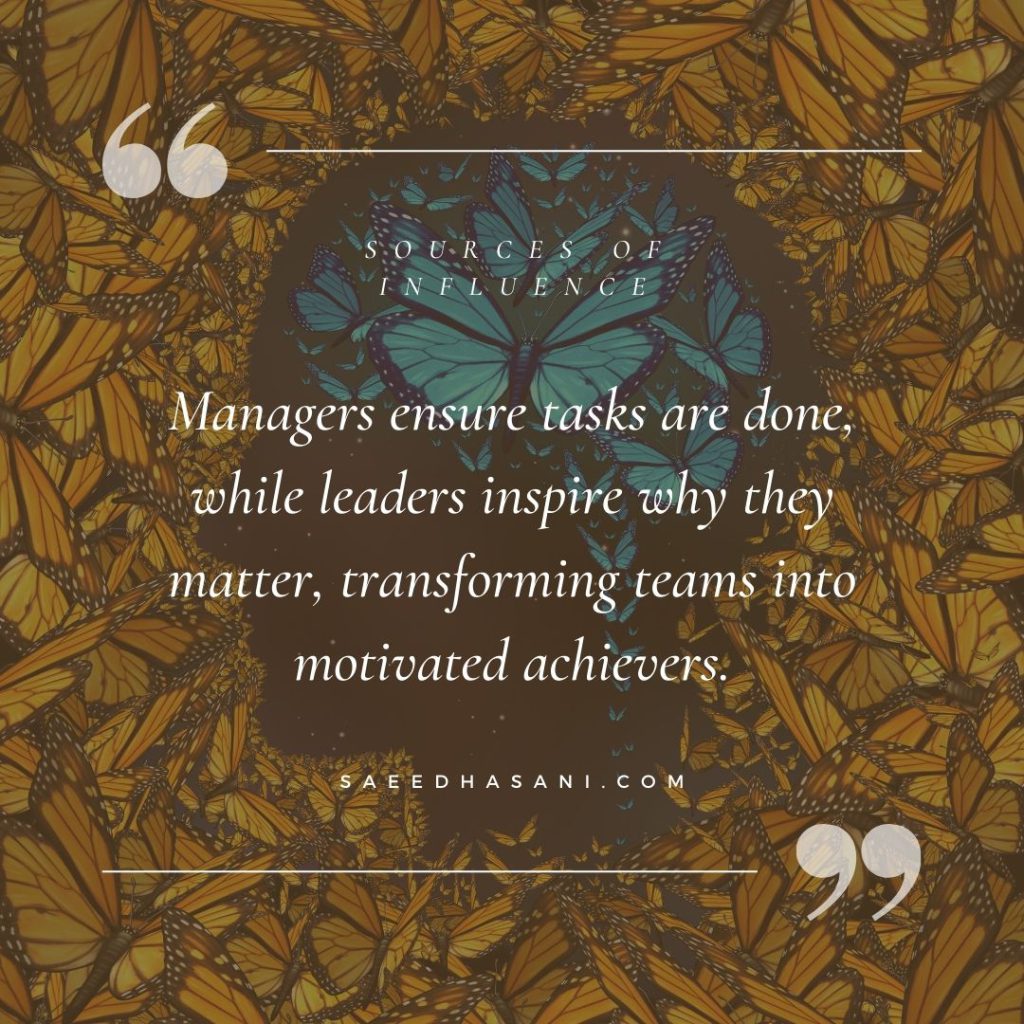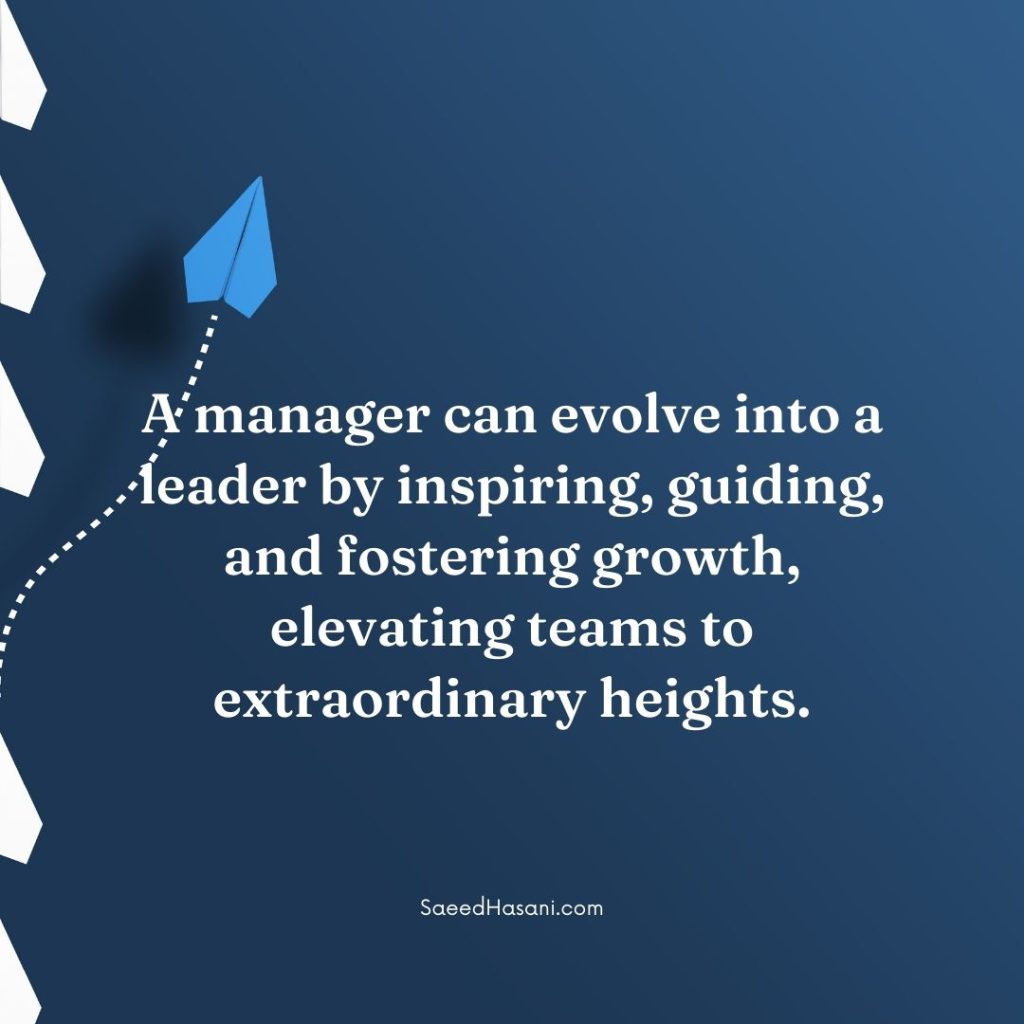Leaders and managers | Is there a difference between their roles?

Organizational dynamics, the distinction between leaders and managers, form the essence of a company’s structure. Often interchangeable but inherently distinct, these roles hold the keys to creating a harmonious and prosperous work environment. While their functions may overlap, understanding the fundamental differences between leaders and managers is essential to orchestrating a seamless collaboration. In this short article, we will discover the main differences between leaders and managers and learn about effective leadership and management.
What’s the difference between leaders and managers?
The terms “leader” and “manager” are frequently interchanged, yet they carry distinct implications that shape the fabric of a company. While these roles often overlap, understanding their fundamental differences is pivotal for fostering a harmonious work environment. Let’s delve into the core disparities that set leaders and managers apart:
Emphasis on Direction:
Leaders are chiefly concerned with charting a course by formulating a clear vision, galvanizing teams, and steering them toward long-range objectives. They exemplify the “why” behind actions and embody the organization’s overarching direction.
Managers, on the other hand, focus on the tactical intricacies of daily operations. Their role revolves around orchestrating tasks, optimizing resource allocation, and ensuring timely completion. Managers are preoccupied with the “how” of execution.
Vision and Implementation:
Leaders: It falls to leaders to articulate the organization’s mission, strategy, and aspirational goals. They provide the overarching blueprint and illuminate the more considerable significance behind team efforts.
Managers: Managers pivot towards executing the plans conceived by leaders. They break down the grand vision into actionable components, delegate responsibilities, and supervise the implementation details.
Leaders and managers have differences in Vision and Implementation.
Catalysts for Innovation and Change:
Leaders: Innovation and change are often spearheaded by leaders who foster an environment conducive to creativity. They champion novel ideas, encouraging calculated risks that propel the organization forward.
Managers: Managers, in contrast, are the custodians of stability, adhering to established processes. Directives from leaders or practical operational needs typically prompt changes in operations.
Interpersonal Dynamics:
Leaders: Leaders cultivate profound connections with team members, exuding approachability, empathy, and understanding. They prioritize personal growth, nurturing trust and allegiance among the workforce.
Managers: Managers uphold professional relationships with their teams, focusing on task-oriented interactions. Their engagements encompass performance evaluations, feedback, and resource management.
Leaders and managers have differences in Interpersonal Dynamics.
Sources of Influence:
Leaders: Influential leaders draw their power from personal attributes, expertise, and ability to inspire and guide others. Their impact isn’t limited by formal authority but is rooted in earned respect and followership.
Managers: Managers derive their influence from their position’s formal authority within the organizational hierarchy. Their sway is often tied to their role’s responsibilities.
Temporal Perspectives:
Leaders: Leaders contemplate the organization’s long-term strategic objectives and its sustainable expansion.
Managers: Managers channel their efforts into short-term goals and tasks, contributing to the overarching long-term goals set forth by leaders.
In practice, an influential organization harmonizes both leadership and management prowess. Many accomplished leaders exhibit adept management skills, and successful managers can seamlessly incorporate leadership qualities. Striking the proper equilibrium between these roles hinges on the organization’s unique context and requirements.

Management skills vs. leadership skills
Management and leadership skills are vital in effectively steering teams and organizations. Although they share the goal of guiding groups toward success, they encompass distinct abilities and emphasize different facets of leadership. Management skills vs. Leadership skills are one of the topics that leaders and managers should pay attention to. Let’s delve into the distinctions between these two crucial skill sets:
Management Skills:
1. Planning and Organization: Managers meticulously strategize and arrange tasks, resources, and schedules to ensure optimal efficiency and timely task completion.
2. Decision-Making: Managers leverage available data to make informed choices. They assess options, deliberate alternatives, and select the best path for the team or organization.
3. Problem-solving: Addressing diverse challenges is a manager’s forte. They dissect problems, identify underlying causes, and engineer solutions to surmount emerging issues.
4. Delegating Tasks: Managers assign responsibilities based on team members’ proficiencies, knowledge, and workload. They guarantee equitable distribution of tasks aligned with team goals.
5. Monitoring and Control: Managers oversee progress, evaluate performance, and verify that projects adhere to plans. They intervene if deviations from the blueprint arise.
6. Resource Management: Managers allocate and oversee resources, including budgets, equipment, and personnel, to realize organizational objectives.
7. Enhancing Efficiency: Managers streamline workflows and processes to elevate efficiency and productivity within the team or organization.
Leadership Skills:
1. Vision and Inspiration: Leaders paint compelling future visions, motivating their teams to work passionately toward these aspirations. They communicate purpose and direction effectively.
2. Effective Communication: Proficient leaders excel in communication. They actively listen, articulate ideas clearly, and foster robust relationships with team members.
3. Motivation: Leaders kindle motivation and empowerment among team members. Acknowledging strengths, offering positive feedback, and nurturing ownership in tasks are their hallmarks.
4. Influence and Persuasion: Leaders sway others through empathy, persuasion, and convincing individuals to embrace specific courses of action.
5. Adaptability: Leaders thrive amidst uncertainty, adeptly guiding teams through challenges and transformations with their adaptable approach.
6. Fostering Collaboration: Leaders cultivate a collaborative milieu where team members synergize effectively, leveraging each other’s strengths to accomplish shared objectives.
7. Empathy: Effective leaders grasp team members’ needs, concerns, and motivations. They exhibit empathy, providing support whenever necessary.
8. Ethical and Moral Integrity: Leaders often set ethical benchmarks, epitomizing moral values within the organization. Their decisions align with the organization’s principles.
In essence, management skills revolve around practical execution and operational efficiency, while leadership skills motivate and guide individuals and teams toward a collective vision. Although these skills may intersect, successful leaders typically balance management and leadership skills, propelling organizations forward effectively.

How to lead managers?
Leading managers involve a mix of effective communication, collaboration, and fostering a positive work environment. Here are some tips to help you lead managers successfully:
- Open Communication: Establish an environment where open and honest communication is encouraged. Regularly check in with your managers to discuss challenges, successes, and concerns. Be approachable and receptive to their feedback.
- Set Clear Expectations: Clearly define roles, responsibilities, and expectations for each manager. Make sure they understand their goals and how their work contributes to the overall success of the team and organization.
- Delegate Authority: Give managers the autonomy to make decisions within their domains. Trust their expertise and empower them to solve problems and take ownership of their teams’ performance.
- Provide Support: Offer guidance, resources, and assistance when needed. Your role is to facilitate their success, so be ready to provide coaching and mentoring to help them grow professionally.
- Recognize Achievements: Acknowledge and celebrate the achievements of your managers and their teams. Recognition boosts morale and motivation, encouraging them to continue performing at their best.
- Collaborate: Foster a collaborative environment where managers share ideas and insights with each other. Encourage them to collaborate on cross-functional projects to promote a sense of unity and a broader perspective.
- Lead by Example: Model the behavior and work ethic you expect from your managers. Show dedication, professionalism, and a positive attitude, which will inspire them to do the same.
- Provide Growth Opportunities: Offer opportunities for skill development and advancement. Discuss career paths, training programs, and projects that can help them enhance their skills and move up within the organization.
- Problem-Solving: Help managers navigate challenges by offering guidance without necessarily dictating solutions. Encourage them to think critically and find innovative ways to address issues.
- Feedback and Development: Regularly provide constructive feedback on their performance. Focus on their strengths while suggesting areas for improvement. Create development plans to help them continually enhance their skills.
- Handle Conflict Gracefully: When conflicts arise, address them promptly and professionally. Help managers resolve conflicts within their teams and provide guidance on effective conflict resolution strategies.
- Work-Life Balance: Encourage a healthy work-life balance among your managers. Demonstrate that you value their well-being and emphasize the importance of self-care to prevent burnout.
- Adaptability: Be flexible and adaptable in your leadership style. Different managers may require different approaches based on their personalities, strengths, and challenges.
- Stay Informed: Keep up-to-date with industry trends and changes that might impact your managers’ work. This knowledge will allow you to provide relevant guidance and support.
- Celebrate Diversity: Embrace the diverse perspectives and backgrounds of your managers. Create an inclusive environment where everyone feels valued and respected.
Remember, leadership is a dynamic process that requires continuous improvement and adjustment. By nurturing a supportive and collaborative culture, you’ll be well on your way to effectively leading your managers and helping them excel in their roles.
Can a manager be a leader?
Absolutely, a manager can also be a leader. In fact, the best managers are those who also possess strong leadership qualities.
Think of a manager as someone who’s in charge of a team or a group of people. They handle tasks like organizing work, setting goals, and making sure things run smoothly.
Now, a leader, on the other hand, goes beyond just managing tasks. A leader inspires and guides their team. They set a positive example, motivate people, and help them grow.
So, the cool thing is, that a manager can totally be a leader too. In fact, when a manager adds leadership skills to their toolkit, they become like a superhero for their team. They don’t just make sure things get done, they make sure everyone is excited to do their best and reach for the stars.
Being a leader as a manager means you listen to your team, support their ideas, and help them develop their strengths. You’re not just the boss; you’re someone they trust and look up to. You create an environment where people are happy to work together and where everyone’s ideas count.
So yeah, being a manager is like driving a car, making sure it’s on the right road. But being a leader is like giving that car a turbo boost, taking everyone on an awesome journey and making sure they enjoy every step of it. And that’s a pretty awesome combo!

Conclusion
The roles of leaders and managers may be intertwined, their unique characteristics shaping the course of an organization. With their visionary power and transformative influence, leaders set the compass toward long-term goals.
While managers, with their detailed planning and operational insight, steer the ship in the daily sea of tasks and challenges.
The interaction between these roles is not a mere duality, but the coexistence of these two brings positive results. An effective organization recognizes that the best results emerge when leadership and management converge, where inspiring vision is combined with strategic execution.
Successful leaders integrate management skills seamlessly, just as successful managers adopt leadership qualities and create a holistic approach that promotes individual growth and collective progress.
Ultimately, the art of leadership and management is about finding balance. It’s about weaving the threads of empathy, efficiency, influence, and strategy into a tapestry that fosters innovation, empowers teams, and propels organizations to greatness. As the organizational context evolves, understanding, appreciating, and adapting these roles becomes the compass that guides organizations toward sustained success.
If you enjoyed reading this article, it is better to send your friends the link to this article. In this way, they will learn about the differences between leadership and management.







Responses